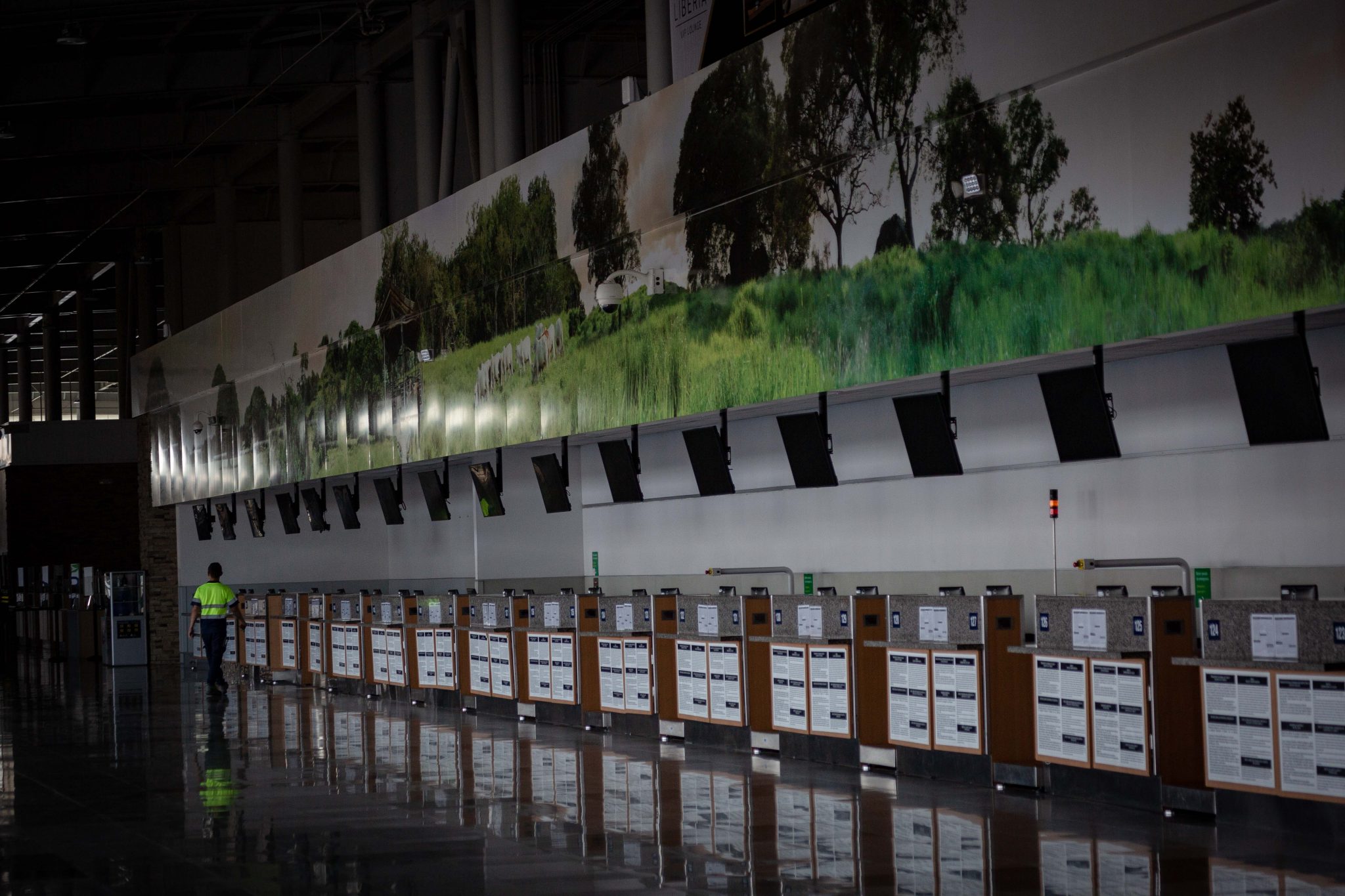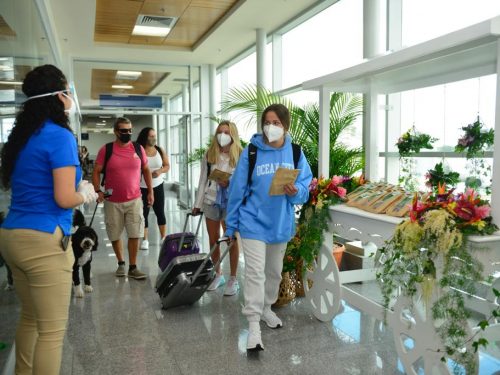
Costa Rica will reopen its air borders on August 1st for foreigners from Canada, the United Kingdom and the European Union. However, the Daniel Oduber Airport in Liberia will have to wait, because the airlines there only operate flights into and out of the United States for nationals, residents and foreigners leaving the country at this time.
The manager of Coriport (the company that operates the airport terminal) César Jaramillo, said that based on annual records, 8 out of every 10 passengers who arrive at the Daniel Oduber are Americans. “The decision to open up to the United States has economic consequences, but it is a healthcare decision,” he said.
The airport personnel will consider two options: wait for the country to accept the entry of American tourists or to approach the Canadian market. “We are probably going to make an effort to bring the Canadians in, but it is going to be difficult because it is not their normal travel standard,” says Jaramillo. According to him, Canadians prefer to stay in their country during the summer (June, July and August).
According to a note published on Wednesday morning, July 22nd, the United States was excluded from the list despite the fact that Alvaro Vargas, the director of civil aviation, told La Nación that they would be allowed to enter. Minister of Tourism Gustavo Segura discarded this at a press conference on Thursday, July 23rd. He stated that based on current airline itineraries, only five international flights will arrive at Juan Santamaria Airport per week.
We are making very gradual and very analyzed steps towards a more dynamic tourism sector. These are steps that in balance with the protection of human life and health, are also steps to protect both business and employment,” the minister said.
Segura explained that before the pandemic, between 45% and 50% of the tourists arriving in the country were from the United States, but that “the opening must be very responsible, very gradual and quite limited on the routes”.
The United States is far from being one of the nations in control of the pandemic. On Thursday, July 23th the World Health Organization (WHO) reported during its weekly conference that nearly half of all confirmed cases of COVID-19 in the world come from just three countries: The United States, Brazil and India. Over the past week, Americans have reported more than 60,000 new cases every day.
While the risk of foreign passengers arriving from countries with COVID-19 increases, Costa Rica is also experiencing a high incidence of cases. On Thursday, July 24th, the Ministry of Health reported a new record of 768 daily cases, 9 deaths in 24 hours and 290 total hospitalizations.
In accordance with the report of Sunday, July 26, Guanacaste accumulates a total of 523 people who have been infected with COVID-19. From those, there are 164 active with the virus, 355 are recovered and there are 4 deaths registered in the cantons of Nicoya, Hojancha, La Cruz and Bagaces.
A prepared touristic sector
The Coriport manager, Cesar Jaramillo, said that the airport already complies with the protocols established by the Ministry of Health.
In addition to these measures, they placed glass between airport officials and passengers, as well as space markings to ensure a distance of 1.8 meters between people and hand washers. The airport healthcare centre is also prepared to assess any passengers who present a higher temperature than the established as well as any other health inconvenience.
According to Jaramillo, this guidelines and those established by the Ministry of Health for the paid transportation of people, visiting beaches, managing hotels and tours make the province ready to welcome national and foreign tourists.
In fact, Minister of Tourism Gustavo Segura announced that the World Travel and Tourism Council (WTTC) qualified Costa Rica as a safe destination, after evaluating the 16 national tourism protocols. “They were subjected to scrutiny and were classified as world class protocols. In practice, this means that if a person is eventually infected, a tourism business that has adopted the protocols in a comprehensive manner can ensure that there is no transmission of the infection,” he explained.
It also said that the council valued that the Costa Rican tourism industry is not concentrated in one area, but is distributed throughout the country and that, in addition, Costa Rica is not a destination of agglomerations.
94% of all Costa Rican tourism companies are small and medium sized. Tourism experiences are in family or small groups,” he said.
Besides the opening of international flights, Segura announced at the conference on Thursday, July 23rd, that starting August 1st the tourism sector in cantons with a yellow alert will be able to resume outdoor and adventure tours – such as hiking, trekking, canopy tours and water recreation activities – as long as both business people and tourists comply with health protocols, including not mixing social bubbles. The beaches located in areas on yellow alert will extend their opening hours from 5 a.m. to 2:30 p.m.
“The Instituto Costarricense de Turismo (ICT) has set up monitoring brigades that will visit tourism businesses to verify compliance with these protocols,” announced Segura.
The president of the Guanacaste Tourism Chamber (Caturgua), Hernán Binaghi, is positive about the announcement made by the government regarding tourism: “the most relevant source of tourism, which is the American one, still does not have the conditions. The situation in the United States are not the best (…) The measures that are being taken are correct and will gradually allow us to test new protocols and see how things work”.
Binaghi highlighted that a fundamental pillar for further progress is the responsibility of the private sector, the public and the tourists. “We must all understand that [this pandemic] has changed us and will continue to change our lives, so we can do tourism, but we must do it responsibly. As the government sees that there is responsibility, more and better news will come.”
Steps to be taken
Minister of Tourism Gustavo Segura specified that international passengers must meet certain requirements in order to enter the country, in order to protect the health of the Ticos and guarantee the tourists that visiting Costa Rica is a safe decision. Those requirements are:
- Fill in a digital epidemiological form
- Be tested for COVID-19 and have a negative result within 48 hours prior to entering Costa Rica
- Acquire travel insurance to cover accommodation and food in case you have to comply with a mandatory quarantine
- Comply with the protocols established at the airport, such as the use of masks, disinfection and social distancing







Comments